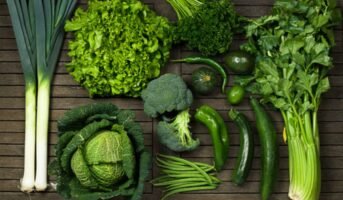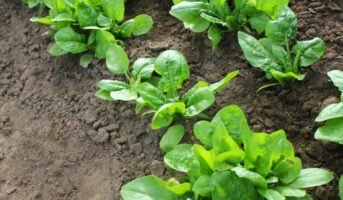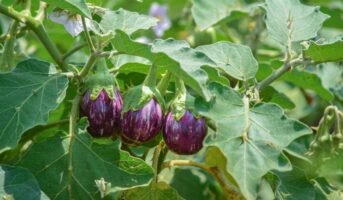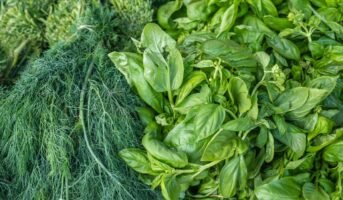Indian vegetables have always held a central spot in the population’s diet due to generations of passed-down values. The enormous amount of vegetables in the Indian market strongly impacts how easily people can meet this daily requirement. India has a diverse agro-climate that allows for the cultivation of various types of vegetables that are high in multiple nutrients. You’d be surprised at the number of vegetables native to India, including brinjals, drumsticks, and bitter gourd (or Karela), among others.
See also: What is Okra and what are its benefits?
Indian vegetables: Features
Various vegetables used in Indian cuisine first appeared in foreign countries after 1500 AD. Potato, tomato, papaya, and chilli are all essential ingredients in Indian cuisine. In addition, vegetables such as cabbage, cauliflower, lettuce, long orange carrots, French beans or haricot, and winged beans were introduced. The significant vegetables of India would be those grown by ploughings, such as cereals, pulses, and oilseeds. ‘Shaka’ was the general term for five types of vegetables. Ripe vegetables, leaves, roots, flowers, and pods were among them.
see also: all about Ladies Finger Benefits
-
Vegetables that have been ripened
Ripened vegetables are those that fall into both the fruit and vegetable categories. A tomato, for example, is both a ‘fruit’ and a ‘vegetable.’
-
Vegetables with leaves
Plant leaves that are ingested as a vegetable, occasionally preceded by petioles and shoots, are known as leaf-type vegetables. The majority of leafy vegetables are derived from herbaceous plants such as lettuce and spinach. Leafy vegetables are high in nutrients.
-
Vegetables of the root class
Root vegetables are either the roots or stems of underground plants used as vegetables. Sweet potatoes, carrots, and beets are among the vegetables in this category. They are highly nutritious because they grow beneath the ground, allowing them to soak up as many minerals and vitamins as possible.
-
Vegetables of the flower type
Flower-form veggies are groupings of flowers arranged on a stem made up of the main branch or a complicated configuration of branches. Its flowers, flower buds, stems, and leaves are all edible.
-
Vegetables in pods
Pod vegetables are fragrant vegetables that are commonly used to flavour food. Garlic, onion, and shallots are examples of pod vegetables. These vegetables can also be kept for an extended period of time. In India, there are multiple sorts and varieties of vegetables. They are all high in nutrients, minerals, and vitamins.
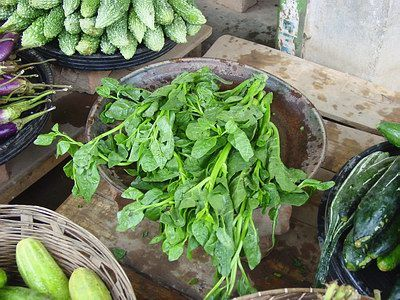
Source: Pinterest
see also: all about Stem Vegetables
Indian vegetables: Key factors for Indian vegetable farming

Source: Pinterest
- In general, climate requirements for vegetable production include a region’s temperature, moisture, daylight, and wind conditions.
- Climate influences all phases and steps of vegetable plant growth. Soil and climatic conditions are important considerations when selecting a location for vegetable farming.
- Furthermore, with the ongoing trend toward specialisation and machinery, modestly large areas for commercial production are required, as are sufficient water supply and transport modes.
- Several routine uses needed for other crops are involved in vegetable soil preparation because wet soil slows development, and good drainage is especially important for early vegetables.
- The production of seeds in all vegetables is the major bottleneck for vegetable cultivation in India. Flowering and fruit sets necessitate a particular temperature and other climatic conditions.
- Some vegetables are grown in one region of the country, but seed manufacturing is limited to another. A protected environment is critical for reducing such microclimatic conditions.
- Most vegetable crops are grown in the field where they will mature. A few types are basic stimuli in a seedbed, grown in a greenhouse or outdoors, and transferred as seedlings.
- Cultivation, irrigation, fertiliser application, weed, disease and insect control, frost protection, and the implementation of growth regulators are all required practices for a vegetable crop grown in the field.
- The genetic charter of the vegetable variety, the direct seeding, and environmental factors during the growing season are all factors that influence the harvest date.
- Planting varieties with various maturity dates or shifting the series of planting dates of one variety can result in successive harvest dates.
see also about: Green pepper
Indian vegetables: Uses
Vegetables are healthy, and we do not need to be told that. A vegetable-rich diet benefits not only your physical well-being but also your well‐being. Regular consumption of vegetables can help lower blood pressure, reduce the likelihood of coronary illness and stroke, inhibit certain types of cancer, and decrease the chance of eye and digestive issues. Consuming a variety of flavours and colours can provide your body with the nutrients it requires.
FAQs
Beetroot, onion, green pepper, cabbage, cauliflower, legumes, eggplants, coriander and fennel, baby spinach, cloves, and cucurbits are the most common veggies in India.
Horticulture is the cultivation of vegetables, flowers, and fruits.
Brinjal is known as the king of vegetables in India. What types of vegetables are grown in India?
What is horticulture?
What is the king of vegetables in India?
Housing News Desk is the news desk of leading online real estate portal, Housing.com. Housing News Desk focuses on a variety of topics such as real estate laws, taxes, current news, property trends, home loans, rentals, décor, green homes, home improvement, etc. The main objective of the news desk, is to cover the real estate sector from the perspective of providing information that is useful to the end-user.
Facebook: https://www.facebook.com/housing.com/
Twitter: https://twitter.com/Housing
Email: [email protected]

